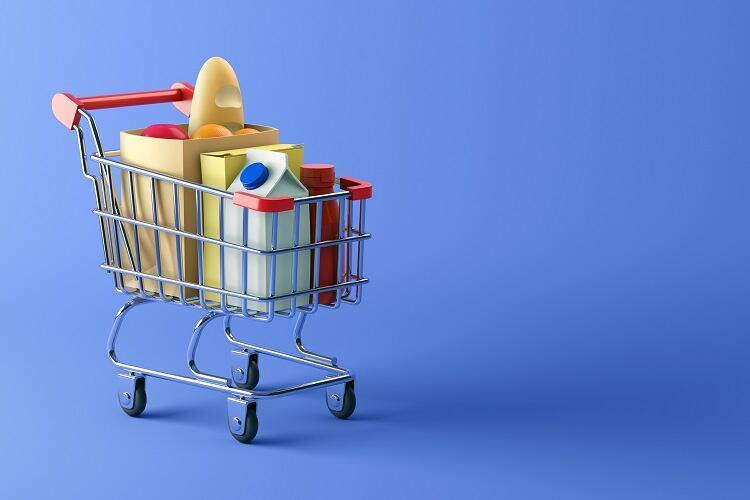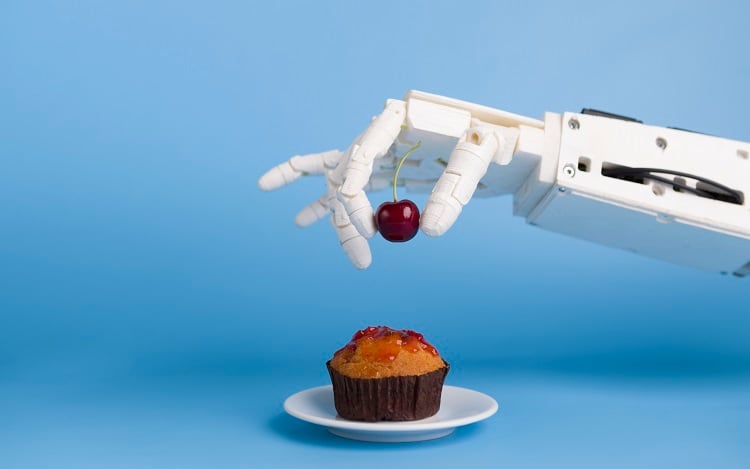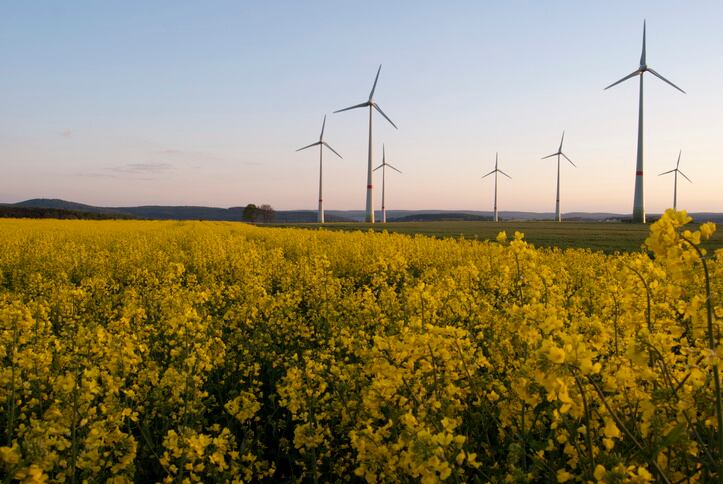Predicting future trends is not all about what we will be eating in the coming years, but also, how. In the first part of this article (available here), ‘future futurologist’ and director of London-based Bellwether Trends, Dr Morgaine Gaye, shared some of her food predictions for the next decade.
The trend forecaster told us ‘the biggest ingredient of the future’ will be air, consumers will eventually move on from the current ‘high-protein’ trend, and in the UK, demand for greater diversity in fruit and vegetable varieties will rise.
Now, to determine how we will be eating 10 years from now – if not earlier – we asked Dr Gaye what role personalisation will play in food choices, whether supermarkets will maintain their ‘middleman’ power, and how urban areas will contribute to biodiversity.
Next-gen personalisation
Personalisation in health and nutrition is not new, particularly in the nutraceuticals space. However, when compared to how far we can go potentially push this trend, Dr Gaye suggested personalisation is still in its infancy.
In recent years, food brands have rolled out personalised products aimed to improve the health – or meet the taste preference – of individual consumers. Last year, for example, UK company Nourished launched a 3D-printed daily gummy snack. To personalise the product, consumers respond to an online questionnaire. The algorithm creates recommendations for nourishments best suited to the particular consumer’s lifestyle, goals, and health.
London-based start-up Erbology is also playing with personalisation. One of its innovations, personalised snacks, relies on consumers filling out a survey. The answers to these questions help the start-up determine which ingredients and flavours a customer likes and doesn’t like, as well as identify particular ingredient intolerances.
However, concepts that require consumers to input personal data themselves ‘feels dated’ to Dr Gaye, she told FoodNavigator. “I think the future of personalisation is way more technical than that. I think it’s to do with the microbiome, I think it’s DNA-related.”
For starters, the food futurologist believes our personal data will be carried in a handheld device – potentially in our smartphones. When we breathe into the device, it could provide information on which micronutrients we are lacking that particular day. Perhaps further down the line, we will be able to scan the device around our kitchen or at a ‘buying wall’ in the supermarket to identify which foods should be consumed that day according to personal requirements.
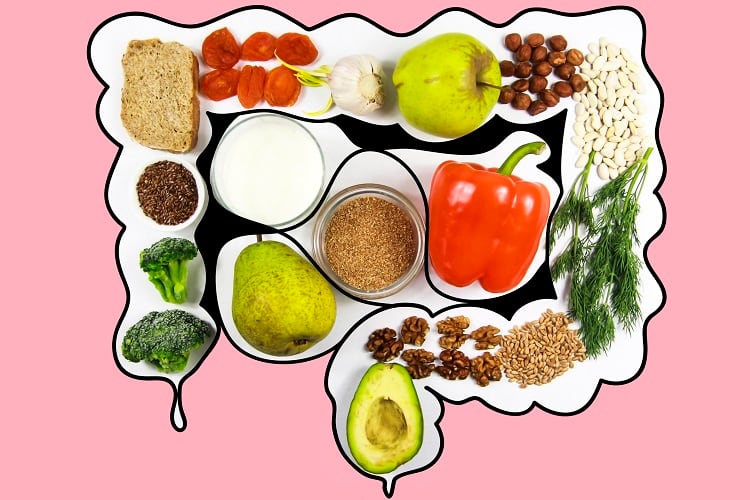
“Moving forward, that device will be embedded,” Dr Gaye predicted. “It will have data related to our health and wellbeing. Our gut and DNA will be monitored, and we will be able to use all that data to select food.”
Of course, we have made great strides already towards this outcome. With DNA tests now readily available, and greater research being put into understanding the microbiome, Dr Gaye said we are now just ‘waiting for the device’. “That’s the future of personalised diets.”
‘The future of supermarkets is in the balance’
Not only how we nourish our bodies, but where we source our nutrients from is set to change, according to Bellwether Trends’ director.
Supermarkets are at a ‘massive’ turning point, Dr Gaye suggested, largely due to the rising competition of discount retailers. “They are having to diversify, partly because of Lidl,” she said, “which is undercutting everybody.”
While there is no ‘atmosphere’ in these low-cost supermarkets, they are able to conventional retailers on price. Unless supermarkets are able to offer an ‘experience’ – Amazon’s Whole Foods could be one example of a high-end shopping experience – it will be harder for players in the ‘middle’ section to offer something unique, we were told. “I think the future of supermarkets is in the balance.”
The trend forecaster also commented on consumers’ changing preference for specialty stores. Whereas in the past, they no longer wanted to shop in multiple stores on the high street – instead preferring the convenience of consolidated retailers and one-stop-shop hypermarkets – this is changing once more.
Supermarket retailers are responding by dividing up the store into ‘little shops within the one big shop’, Dr Gaye explained. Ultimately, consumers are willing to pay money in return for a unique shopping experience, which retailers will be forced to provide.
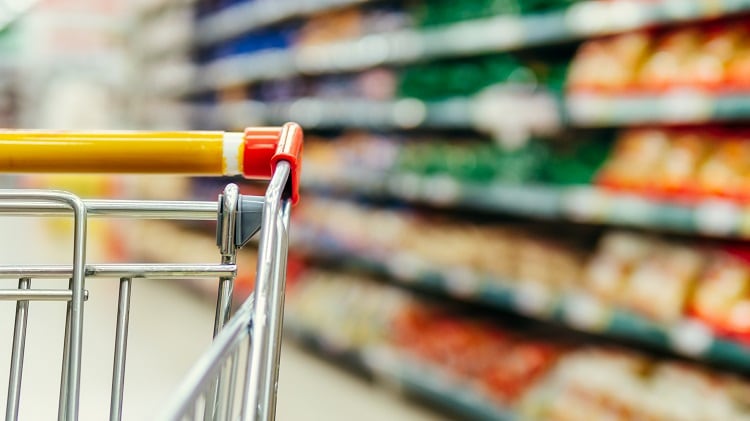
One such ‘unique’ experience, which also plays into the sustainability hand, could be a ‘waste-free supermarket’, Dr Gaye suggested. In this concept, shoppers take their own containers or mesh sacks. They will weigh out and fill up their products themselves, whether it be washing powder or toothpaste.
And if supermarkets can’t offer that experience, it is likely consumers will shop from the comfort of their own home, the trend forecaster implied. In which case, a physical supermarket needn’t exist – simply an Amazon-style warehouse that meets demand for growing e-commerce. “I think that’s the future for supermarkets.”
Biodiversity legislation, compostable packaging
Unsurprisingly, over the next decade Dr Gaye predicts the sustainability agenda to be front of mind for governments, brands, and consumers alike. And that, she says, will become visible in urban areas.
“I think there will be legislation, whereby every flat roof that is built has to have a green space on top.” Indeed, the food futurologist believes such regulations could be with us in the not-so-distant future.

“Even if it’s not farming [on rooftops], it’s at least wildflowers or hives that will keep bee populations going. When we think of food, we think of it as something that we’re going to eat directly, but what we are only just starting to grasp is that the big eco picture is actually more important than picking some carrots from [an urban farm]. It’s about keeping the actual eco-structure going.”
How can brands respond to increased consumer interest and government legislation concerning environmentally-friendly food? Dr Gaye said that whatever they do, ‘business as usual’ is no longer going to work.
Brands cannot be complacent, nor can they rely on past successes. Using packaging as an example, Dr Gaye explained how fast-moving companies need to be, in order to future-proof their products. “I would suggest to anyone who is making any kind of packaging to turn that into compostable, not recyclable, packaging. Skip recyclable, it’s too late for that. It has to be compostable, and if it can be refillable, even better.”
Transparency, she continued, is also going to be ‘absolutely key’ going forwards. “The biggest brands are going to be looked at in depth by the consumer.”
In the first part of our two-part Future Futurology article (available to read here), FoodNavigator looked at what consumers will be eating 10 years from now.


